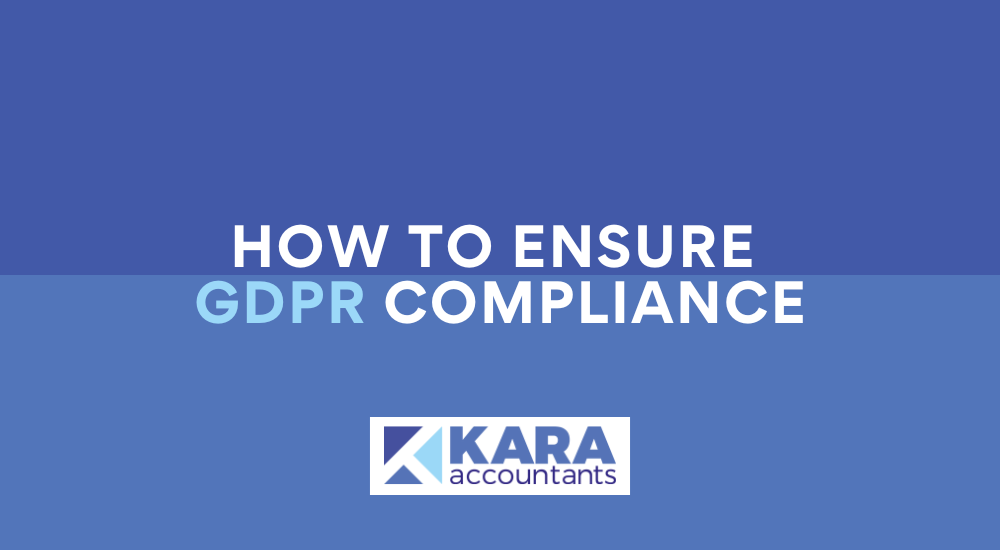
How to Ensure GDPR Compliance
The General Data Protection Regulation (GDPR) has been shaping data privacy standards since its enforcement in 2018, holding companies to high standards of data handling and transparency. Designed to protect the privacy and rights of individuals in the European Union, GDPR compliance is essential for any business handling EU residents’ data. Non-compliance can lead to heavy fines and reputational damage. Below is a step-by-step guide to help your business align with GDPR requirements and safeguard customer data.
1. Understand the Basics of GDPR Compliance
- What is GDPR? GDPR is a regulation aimed at giving EU residents more control over their personal data. It applies to any organisation worldwide that processes personal data of individuals in the EU, regardless of where the organisation is based.
- Key Terms: Understanding core terms like “data subjects” (individuals whose data is processed), “data controllers” (entities that determine data use), and “data processors” (entities that handle data on behalf of controllers) is essential.
2. Appoint a Data Protection Officer (DPO)
- For companies that handle large volumes of personal data or process special categories of data, appointing a Data Protection Officer (DPO) is essential. The DPO is responsible for overseeing GDPR compliance, conducting regular audits, and being the point of contact for supervisory authorities.
3. Map Your Data
- Conduct a data audit to identify what personal data your business collects, where it’s stored, who has access to it, and how it’s processed.
- Data flow mapping helps visualise how personal data travels through your organisation, making it easier to spot potential areas of non-compliance and improve data handling processes.
4. Ensure Lawful Basis for Data Processing
- GDPR requires a lawful basis for processing personal data. The primary grounds include consent, contractual necessity, legal obligation, vital interest, public interest, or legitimate interest.
- Most commonly, businesses rely on consent or legitimate interest. If you rely on consent, it must be freely given, specific, informed, and easily revocable.
5. Get Explicit Consent When Necessary
- Obtain explicit consent before collecting data, especially sensitive data like health information or financial details. Your consent forms should be clear, detailing what data is collected, how it’s used, and the option to withdraw consent.
- Remember to record consents as evidence in case of an audit.
6. Implement Data Minimisation and Purpose Limitation
- Collect only what you need: GDPR emphasises data minimisation, meaning businesses should only collect data that is strictly necessary for the stated purpose.
- Clearly state how the data will be used and avoid using it for unrelated purposes unless you obtain additional consent.
7. Maintain Strong Security Measures
- Data Encryption: Protect personal data through encryption and regularly update systems to prevent unauthorised access.
- Access Control: Limit data access to only those who need it to perform their jobs. Implement strong password policies, two-factor authentication, and restrict administrative privileges.
- Regular Audits: Conduct routine security audits to check for vulnerabilities and improve your defenses against potential data breaches.
8. Enable Data Subject Rights
GDPR grants data subjects specific rights over their data, including:
- Right to Access: Individuals can request access to their personal data.
- Right to Rectification: Individuals can ask for incorrect data to be corrected.
- Right to Erasure: Also known as the “right to be forgotten,” individuals can request their data be deleted under certain conditions.
- Right to Restrict Processing and Data Portability: Individuals can restrict data processing or request that their data be transferred to another service.
- Right to Object: Individuals can object to data processing based on certain grounds, such as direct marketing.
Your organisation should be prepared to address these requests in a timely and efficient manner, ideally within 30 days.
9. Prepare for Data Breaches
- Under GDPR, data breaches that affect personal data must be reported to the relevant supervisory authority within 72 hours of detection. If the breach poses a high risk to individuals, those affected must also be notified.
- Create a data breach response plan to define steps for detection, containment, reporting, and recovery.
10. Draft a GDPR-Compliant Privacy Policy
- Your privacy policy should be easy to understand and clearly outline how you collect, use, and protect personal data. It should also include details about how individuals can exercise their GDPR rights and who they can contact regarding data protection.
11. Train Your Staff
- Regular GDPR training for employees is essential, as human error is a common cause of data breaches. Training should cover data handling, recognising potential breaches, and respecting data subject rights.
12. Document and Demonstrate Compliance
- Maintain records of all GDPR compliance efforts, including consent forms, data flow maps, security protocols, and data processing activities. These records can serve as evidence of compliance in case of an audit.
Complying with GDPR requires a strong commitment to data protection and a thorough understanding of how personal data flows within your organisation. Remember, GDPR compliance is an ongoing process that demands regular audits and updates as regulations evolve.

This Post Has 0 Comments